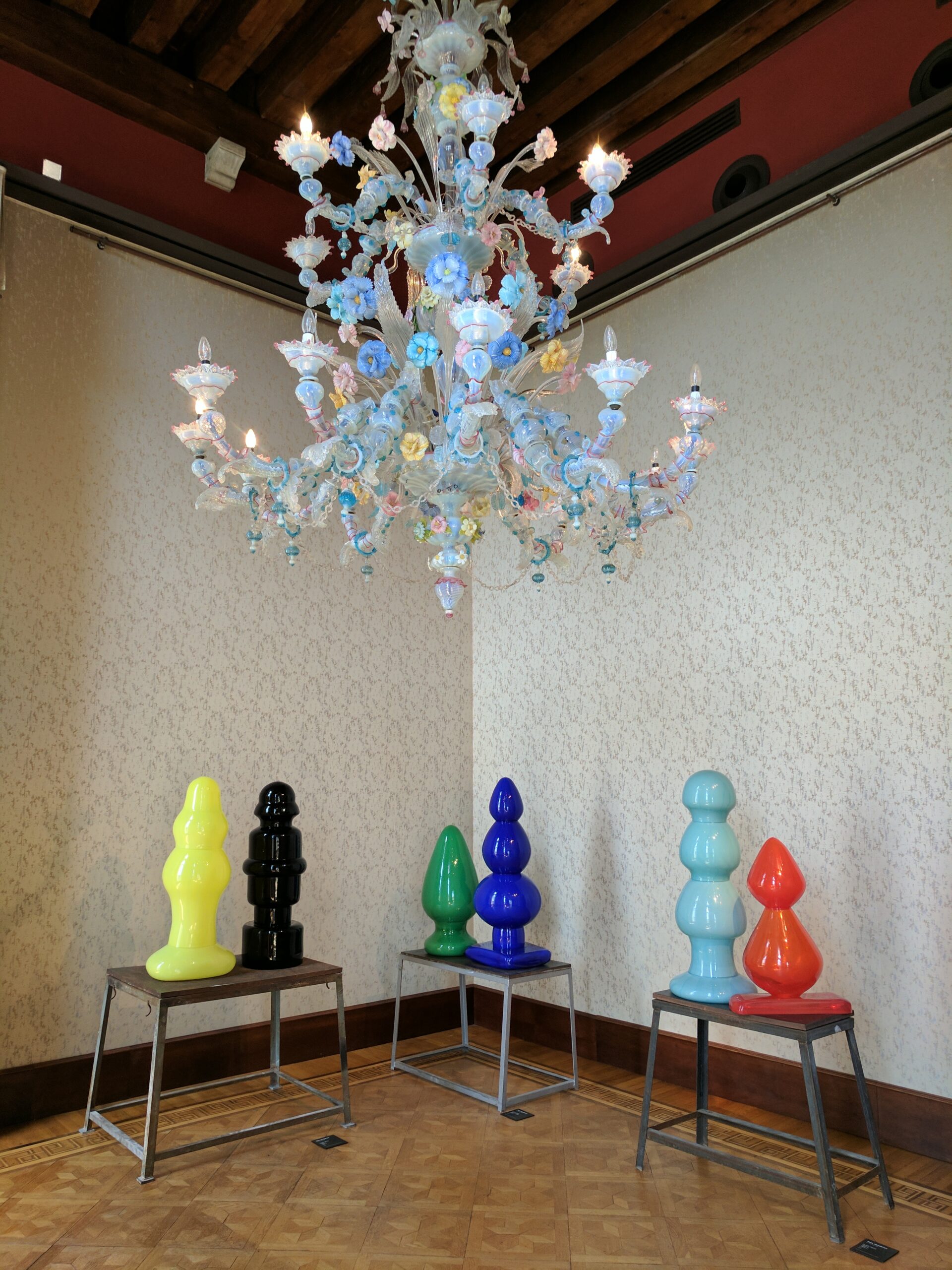Glasstress

Glassmaking can easily be filed under the ‘typically Venetian’ category. The products of this century-old craft are to be seen everywhere – from the heavily decorated chandeliers in almost every palazzo in the city, to the stalls of the street merchants and the multiple tourists, who wear them as jewelry and purchase them as souvenirs. Glass has gained the status of a tourist attraction of its own. In fact, I do believe the small island of Murano has more glass shops than supermarkets and pharmacies taken together and multiplied by a hundred (not proven but very likely to be the case).
So where does glass stand in the greater context of contemporary art and how does it fit as medium within ideas of creative, economic and political nature?
These are the issues that Glasstress 2017 sets out to tackle. Founded in 2009, the lineage of shows seeks to marry glass as a creative process to critical ideas and international contemporary artists. Why? As the organisers sum up: ‘Because there is a need to free glass from functional and decorative limitations to make it a material of contemporary art.’
This year’s edition offers works produced almost exclusively in the past year from a variety of practitioners, some of which make their first attempt at handling glass especially for this show (Ai Wei Wei for example). In the list of participants one finds a nice balance of artists, male and female, prominent names from the big shows of the Biennale (Erwin Wurm, Paul McCarthy and Scotland’s Graham Fagen), as well as lesser known artists whose work is equally impressive.
A personal favourite is Laure Prouvost’s fun and playful ‘Cooling System for Global Warming’ 1&2, an installation of two glass ‘devices’ to help one battle the Venetian heat. Alongside the sculptural works, two instructional drawings show how to do so exactly and although there is no proof the systems actually work, they look like they could be very useful for a mid-August cool down.
To verify the show’s ambition to present visually challenging ideas in the medium of glass, in a smaller gallery to the right of the main space, one finds Paul McCarthy’s Glass Trees – six solid colourful objects, which carry an obvious resemblance to a certain type of sex toys. They are curated under a colourful, extremely over-the-top traditional glass chandelier, which is a part of the permanent setting of Palazzo Franchetti. This selection of objects creates an interesting conversation about the boundaries of the material and its ability to give shape to creative ideas of versatile nature.
With glass being the main critical focus of the show, there is definite eclecticism in the themes and aesthetics of the work. Overall, however, the show achieves its ambitious goal to present multiple ways of viewing a traditional decorative craft and to rethink its possibilities in a contemporary context. More than anything, Glasstress 2017 is current and makes sense in the context of the city and the festival, something very pleasant to stumble upon when floating about in the sea of art that is La Biennale di Venezia.
SP

